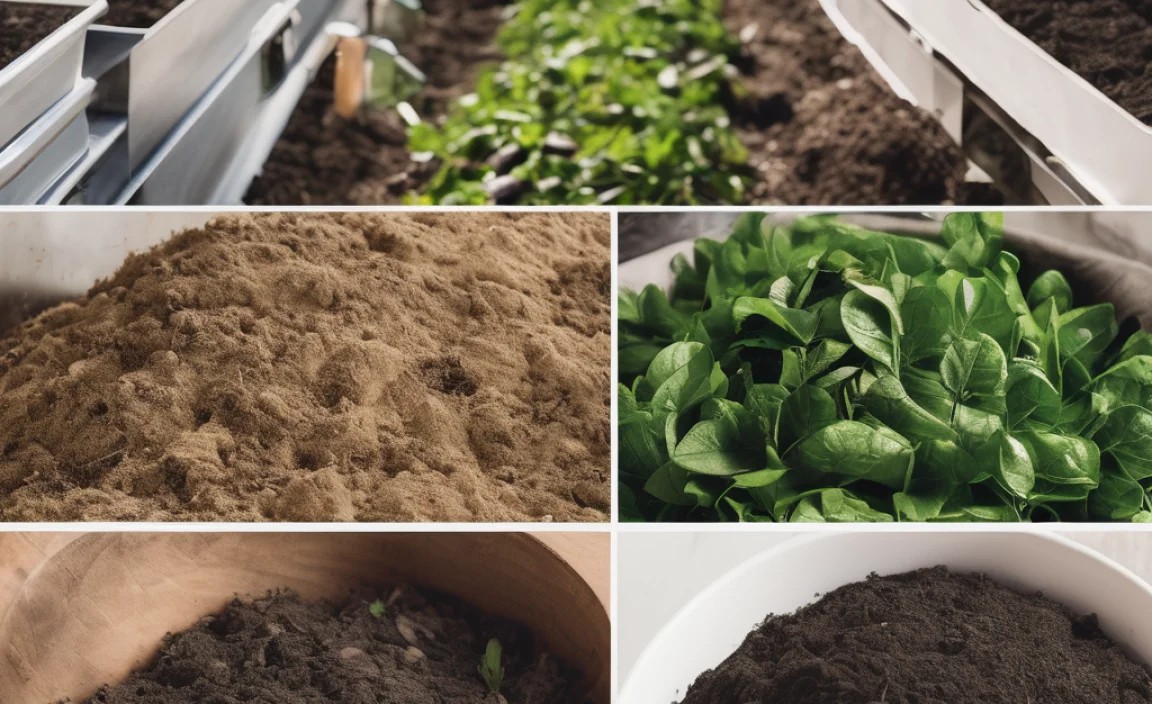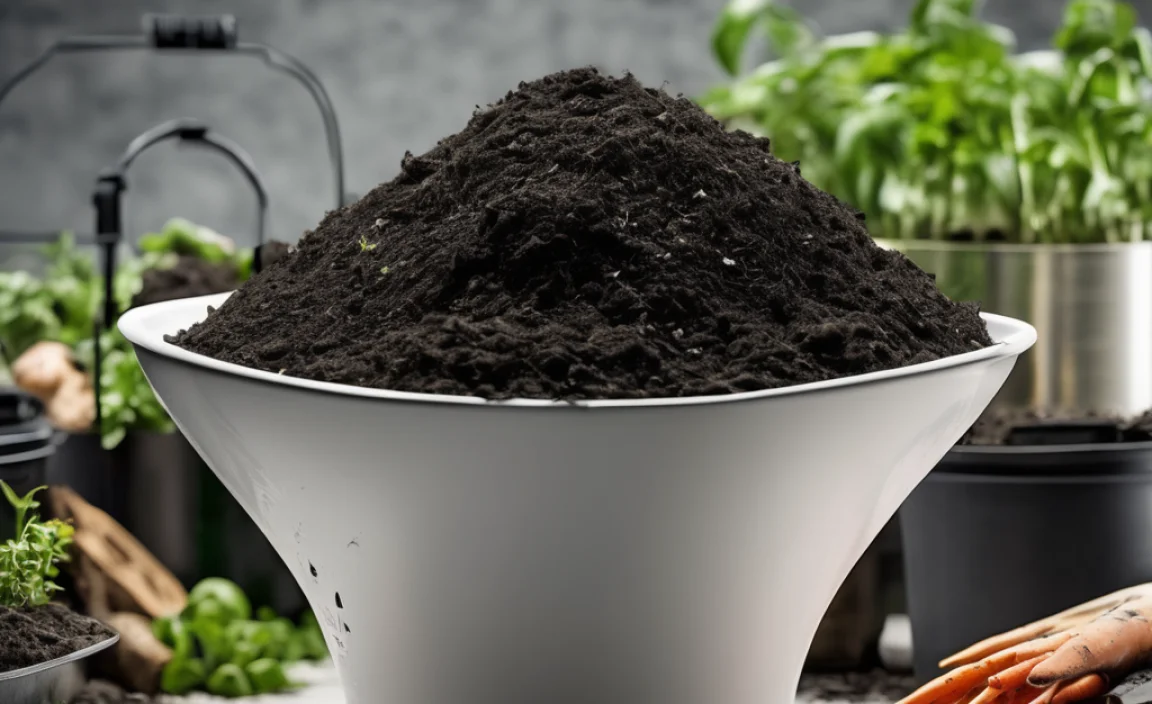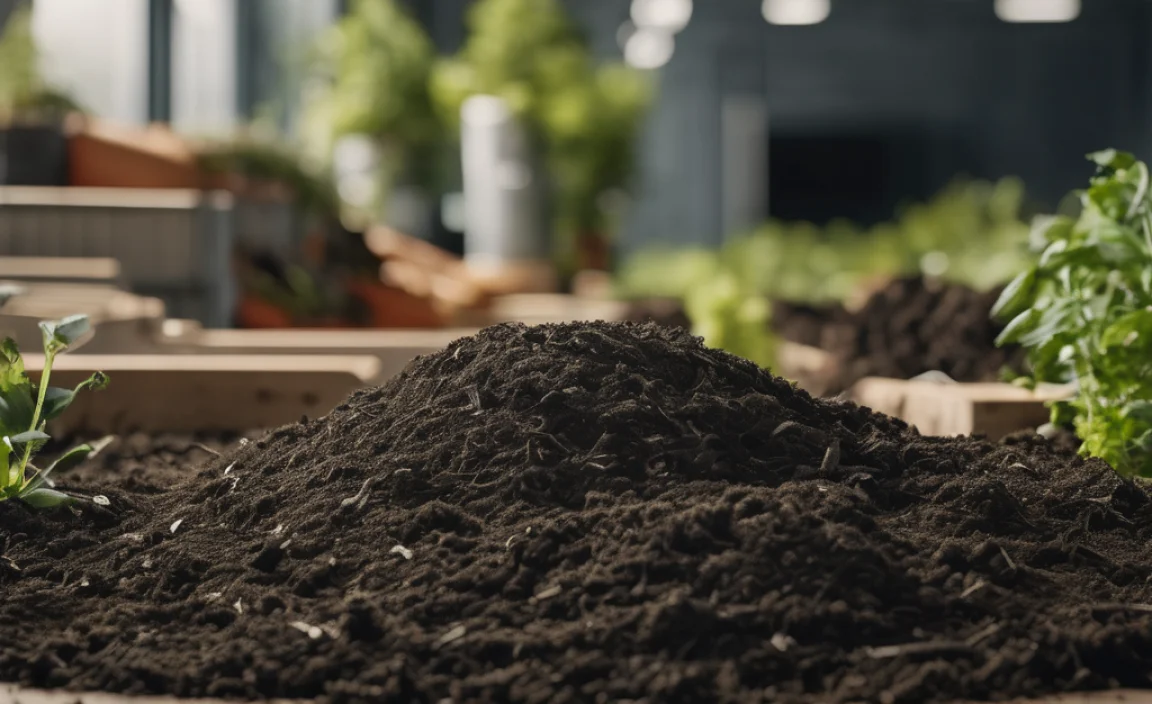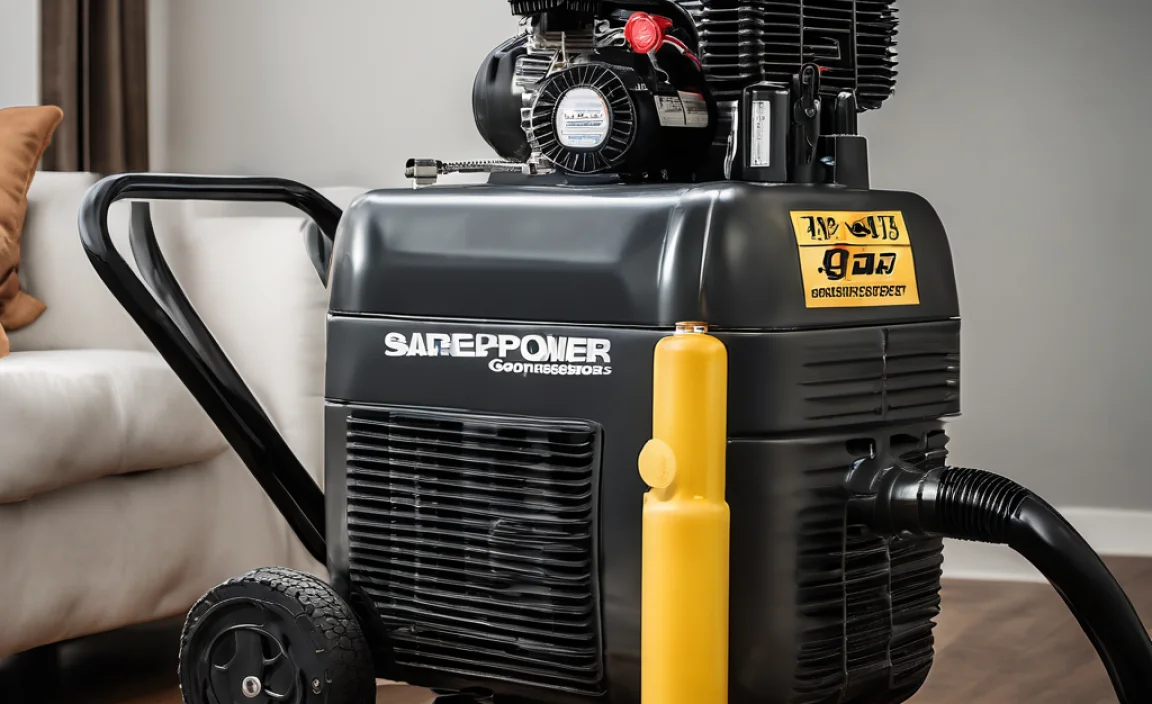Ever feel like your compost pile is taking forever to break down? You dig into it, hoping for rich, dark soil, but find mostly recognizable food scraps and yard waste. It’s a common frustration for many home composters, especially when you’re eager to use that nutrient-rich goodness in your gardens. But what if I told you there’s a simple way to speed things up?
We’re talking about compost accelerators! These helpful helpers can transform a sluggish compost bin into a quick-cooking nutrient factory. Let’s dive in and learn how to make your compost work for you, faster and better. We’ll break down exactly what they are, how they work, and the best options available right here in the USA.
What Exactly Is a Compost Accelerator?

Think of a compost accelerator as a supercharger for your composting efforts. At its heart, composting is a natural process where tiny organisms—like bacteria, fungi, and worms—feast on your kitchen scraps and yard waste, turning them into nutrient-rich humus. Sometimes, this natural breakdown can be a bit slow, especially if your compost pile isn’t perfectly balanced or if the weather is cool.
A compost accelerator is typically a product designed to introduce or boost the populations of these beneficial microbes. Some accelerators are natural, while others might contain added ingredients to help things along. Their main job is to give those hard-working decomposers a helping hand, breaking down materials faster and more efficiently. This means less waiting and more ready-to-use compost for your garden!
Why Use a Compost Accelerator?
Using a compost accelerator offers several fantastic benefits for any composter, whether you’re just starting out or have been at it for years. Here are the key reasons why they’re such a popular choice:
- Speeds Up Composting: This is the big one! Accelerators introduce or multiply the microbes needed to break down organic matter, significantly cutting down the time it takes for your scraps to turn into compost.
- Reduces Odors: A well-balanced and active compost pile shouldn’t smell bad. Accelerators help to maintain optimal conditions that favor beneficial microbes, which in turn break down waste more cleanly, often reducing unpleasant smells.
- Breaks Down Tougher Materials: Some accelerators can help break down materials that might otherwise take a very long time to decompose, like woody yard waste or certain types of food scraps.
- Increases Compost Quality: By promoting a more efficient breakdown, accelerators can lead to a finer, more consistent, and nutrient-rich final compost product.
- Easier for Beginners: If you’re new to composting, getting the perfect balance of “greens” and “browns” can be tricky. An accelerator can help compensate for slight imbalances and ensure your pile gets going.
Types of Compost Accelerators Available in the USA

When you head to your local garden center or search online, you’ll find a variety of compost accelerators. They generally fall into a few main categories, each with its own pros and cons:
1. Microbial Accelerators (Microbe-Based)
These are the most common type. They contain concentrated populations of beneficial bacteria and enzymes specifically chosen for their composting prowess. They essentially “seed” your compost pile with the right kind of help.
- What they are: Often come as powders, liquids, or granules.
- How they work: Introduce a diverse and active community of microbes that consume organic matter quickly.
- Pros: Very effective, generally fast-acting, help balance the pile.
- Cons: Can be a bit more expensive than natural methods, effectiveness can depend on the balance of your pile.
2. Natural Accelerators
These are materials you can often find around your home or easily source, which naturally promote decomposition. They work by adding a balance of nitrogen (a “green” material) or by introducing beneficial microbes and nutrients.
Common Natural Accelerators include:
- Grass Clippings: Fresh grass clippings are rich in nitrogen and moisture, acting as a great “green” material to kickstart a pile. Just be sure not to add thick layers, as they can mat down and create odor.
- Coffee Grounds: Another nitrogen boost! Coffee grounds also contain minerals that aid decomposition.
- Manure (Aged): Well-rotted manure from herbivores (like cows, horses, chickens) is teeming with microbes and nitrogen, acting as a powerful natural accelerator. Make sure it’s aged, as fresh manure can be too hot and introduce pathogens.
- Finished Compost: Adding a shovel or two of finished compost to a new pile is like giving it a head start. It introduces a robust colony of mature composting microbes.
- Urine: Believe it or not, diluted urine is a fantastic source of nitrogen and microbes. A good rule of thumb is about 1 cup of urine to 10 cups of water.
Pros: Often free or very low cost, readily available, organic, and environmentally friendly.
Cons: Might take a bit longer to see results compared to commercial microbial accelerators, requires managing your “green” and “brown” ratios carefully.
3. Chemical Accelerators (Less Common and Generally Not Recommended for Home Gardeners)
These products often contain nitrogen-rich chemicals like ammonium sulfate to increase the temperature of the compost pile and speed up decomposition. However, they are generally not recommended for home composting because they can potentially harm beneficial organisms, introduce salt buildup, and their long-term environmental impact is less understood.
Pros: Can be very fast-acting.
Cons: Potential harm to microbes, soil health, and the environment; usually not necessary for typical home composting needs.
For most home gardeners in the USA, sticking to microbial or natural accelerators is the best and safest bet.
How Compost Accelerators Work: The Science Behind the Speed

Composting is a biological process. Microorganisms—bacteria, fungi, actinomycetes, and even larger critters like worms and insects—are the stars of the show. They break down complex organic materials into simpler compounds, eventually forming humus.
Here’s a simplified breakdown:
- Stage 1: Mesophilic Bacteria: These microbes thrive at moderate temperatures (50-105°F or 10-40°C). They are the first responders, starting the breakdown of sugars and starches in your fresh organic material.
- Stage 2: Thermophilic Bacteria: As the mesophilic bacteria work, they generate heat. When the pile reaches temperatures between 105-160°F (40-70°C), thermophilic bacteria take over. These heat-loving microbes are incredibly efficient at breaking down proteins, fats, and complex carbohydrates, significantly reducing the volume of your compost and killing weed seeds and pathogens.
- Stage 3: Actinomycetes and Fungi: As the pile cools down, actinomycetes and fungi come into play. They tackle tougher materials like cellulose and lignin (found in woody stems and straw) and contribute to the earthy smell of finished compost.
- Stage 4: Curing: In the final stage, mesophilic microbes return, and the compost matures, developing a stable, humus-like structure.
How accelerators help:
- Microbial Accelerators: They introduce a highly concentrated and diverse mix of the right bacteria and enzymes to jump-start Stage 1 and Stage 2. This helps the pile heat up faster and more consistently, accelerating the entire process.
- Natural Accelerators: Nitrogen-rich materials (like grass clippings or manure) provide the “food” that microorganisms need. A good carbon-to-nitrogen (C:N) ratio is crucial for composting. “Greens” (nitrogen-rich) are essential for microbial growth and energy. “Browns” (carbon-rich) provide the structure and energy source for microbes. Accelerators help achieve this balance.
The key takeaway is that a healthy, active compost pile relies on a robust ecosystem of microbes. Accelerators simply give that ecosystem a powerful boost.
Choosing the Best Compost Accelerator for Your Needs in the USA

With so many options available, selecting the right compost accelerator can feel overwhelming. Here are some factors to consider to help you make the best choice:
Consider Your Composting Goals
- Speed: If your primary goal is to get compost as quickly as possible, opt for a high-potency commercial microbial accelerator.
- Budget: If you’re on a tight budget, natural accelerators like grass clippings, coffee grounds, or aged manure are excellent, low-cost options.
- Ease of Use: Commercial accelerators are often very simple to use—just scoop, sprinkle, and mix. Natural methods require more attention to balancing your compost ingredients.
- Organic Gardening Practices: If you’re committed to strictly organic methods, avoid any chemical accelerators and stick to natural or certified organic microbial boosters.
Factors to Look for in Commercial Products
When buying a commercial compost accelerator in the USA, look for:
- Ingredients: Check for a clear list of beneficial microbes (e.g., Bacillus species, Lactobacillus species) and enzymes.
- Reputation: Research brands with good reviews from other American gardeners.
- Form: Powders, liquids, and granules all work, but some might be easier to distribute in your bin than others.
- Manufacturer Location: Sometimes supporting US-based manufacturers is a bonus.
Natural vs. Commercial: A Quick Comparison
Here’s a table to help you visualize the differences:
| Factor | Commercial Microbial Accelerator | Natural Accelerators |
|---|---|---|
| Speed of Composting | Fastest; noticeable difference in weeks. | Moderate to fast; depends on the type and quantity used, and pile management. |
| Cost | Moderate to high initial cost per product. | Low to free; often uses household or yard waste. |
| Ease of Use | Very easy; a few scoops and mix. | Moderate; requires careful selection and balancing of green/brown materials. |
| Organic Certification | Varies; look for certified organic products if needed. | Naturally organic. |
| Microbial Diversity | Can be very high and targeted. | Naturally present, may be less concentrated or diverse initially. |
Where to Buy Compost Accelerators in the USA
You can find compost accelerators in a variety of places:
- Garden Centers and Nurseries: Many local garden supply stores carry a selection of commercial accelerators.
- Hardware Stores: Larger chains often have a gardening section with composting supplies.
- Online Retailers: Websites like Amazon, Chewy, and specialized gardening supply sites offer a wide range of US-based and international brands.
- Farm and Feed Stores: These locations might carry organic compost starters or aged manure.
How to Use Compost Accelerators Effectively: Step-by-Step

Using an accelerator is usually pretty straightforward, but a few tips can ensure you get the most bang for your buck and speed up your composting success. The goal is to integrate the accelerator evenly into your moist compost materials.
Step-by-Step Guide
- Gather Your Materials: You’ll need your compostable scraps (kitchen waste, yard trimmings), “browns” (dry leaves, shredded paper), and water. If you’re using natural accelerators like grass clippings or manure, have those ready too.
- Check Moisture Levels: Your compost pile should be damp, like a wrung-out sponge. If it’s too dry, the microbes won’t be active. If it’s soaking wet, it can become anaerobic and smelly. Add water if needed until it’s just right. You can learn more about maintaining ideal moisture levels from resources like the U.S. Environmental Protection Agency (EPA), which provides excellent composting guidelines.
- Prepare the Accelerator:
- Commercial Powder/Granules: You can often sprinkle these directly over your compost layers. Some recommend mixing it with a little water first to help it distribute more evenly.
- Commercial Liquids: Dilute these according to the package instructions, usually with water.
- Natural Accelerators: Chop up grass clippings, mix in coffee grounds, or ensure your aged manure is crumbled.
- Layer or Mix:
- For New Piles or Adding New Material: As you add your green and brown materials to the bin, sprinkle the accelerator evenly over each new layer. This ensures it’s mixed throughout the decomposing matter.
- For Existing Piles: Gently turn or aerate your existing compost pile. Then, sprinkle the accelerator over the surface and mix it in as much as possible as you turn. Aim to get it into the center of the pile.
- Turn Your Compost (Optional but Recommended): For best results, especially with commercial accelerators, turning your compost pile every week or two helps introduce oxygen, which is vital for aerobic decomposition. This also distributes the moisture and the accelerator mixture evenly.
- Maintain Moisture and Aeration: Continue to monitor the moisture level and turn your pile regularly. The accelerator will do its work, but these basic composting principles are still key to success.
- Add More if Needed: For very large or slow-moving piles, you might need to add a bit more accelerator every few weeks, following the product’s instructions.
Tips for Success
- Don’t Overdo It: More isn’t always better. Follow the product’s recommendations or use natural accelerators in moderation. Too much can sometimes upset the balance.
- Even Distribution is Key: The accelerator needs to come into contact with the materials it needs to break down. Sprinkle and mix thoroughly.
- Balance Greens and Browns: Even with an accelerator, a good mix of nitrogen-rich “greens” and carbon-rich “browns” is essential. Aim for roughly a 2:1 or 3:1 ratio of browns to greens by volume.
- Chop Materials: Smaller pieces break down faster. Chop up larger kitchen scraps and yard waste before adding them to the pile.
- Patience is Still a Virtue: While accelerators speed things up, composting still takes time. Depending on your materials, climate, and how active your pile is, it can take anywhere from a few weeks to a few months.
Common Composting Mistakes and How Accelerators Help
Even with good intentions, composting can sometimes go wrong. Here are a few common pitfalls, and how using an accelerator can help steer you back on the right track:
Problem 1: The Smelly Pile
What it looks like: Your compost smells like rotten eggs or ammonia. This usually means the pile is too wet and lacks oxygen (anaerobic conditions). Beneficial microbes can’t work effectively, and unpleasant-smelling byproducts are created.
How accelerators help: A good microbial accelerator introduces aerobic bacteria that thrive in oxygen-rich environments. By boosting these microbes, they outcompete the odor-producing anaerobic bacteria. Additionally, if the smell is due to a lack of nitrogen, some accelerators (or naturally nitrogen-rich materials you add alongside them) can restore the proper balance.
Problem 2: The Slow-Moving Pile
What it looks like: Your compost pile remains wet and un-decomposed for weeks or months. It’s not heating up, and things are just sitting there.
How accelerators help: This often happens when there aren’t enough active microorganisms to get the decomposition process going. A commercial microbial accelerator directly introduces a concentrated workforce of decomposers. Natural accelerators, like fresh grass clippings or aged manure, add essential nitrogen, which is crucial fuel for microbial activity.
Problem 3: The “Mushy” or Slimy Pile
What it looks like: The compost feels dense, wet, and slimy, with little airflow. This is another sign of anaerobic conditions, often caused by too much “green” material and not enough “browns.”
How accelerators help: While an accelerator doesn’t directly fix the green/brown balance, a healthy microbial population thrives on a balanced diet. By ensuring you have enough nitrogen (from greens and the accelerator itself) and structure (from browns), the microbes can process the material more efficiently, preventing it from becoming a matted, slimy mess. Turning the pile regularly, which is often done when adding an accelerator, also helps introduce air to combat this.
Problem 4: Pests
What it looks like: You’re attracting rodents, flies, or other unwanted visitors.

I am passionate about home engineering. I specialize in designing, installing, and maintaining heating, ventilation, and air conditioning systems. My goal is to help people stay comfortable in their homes all year long.

